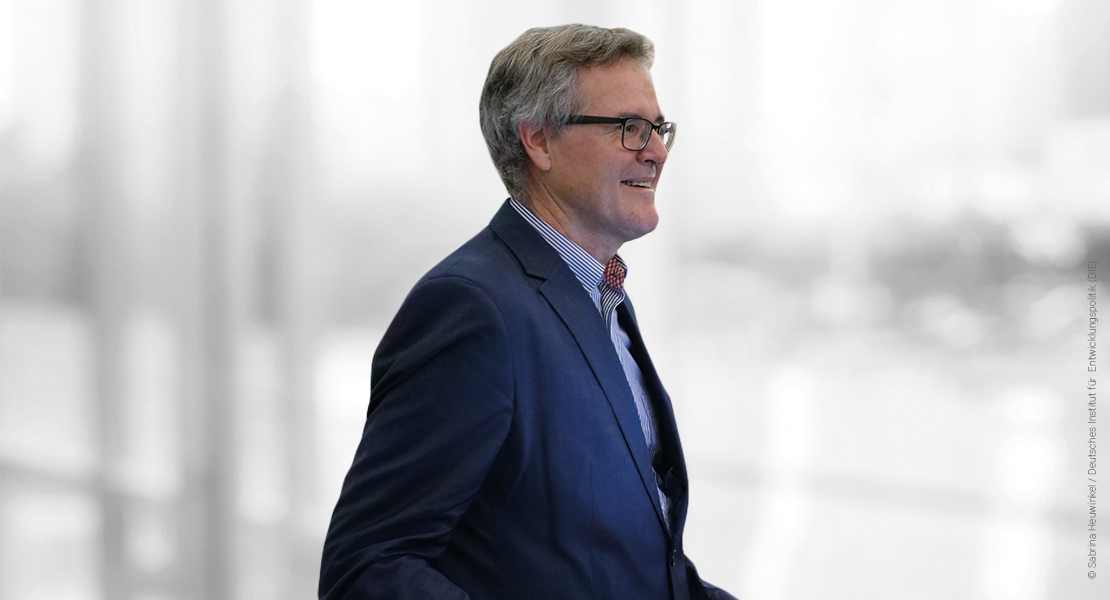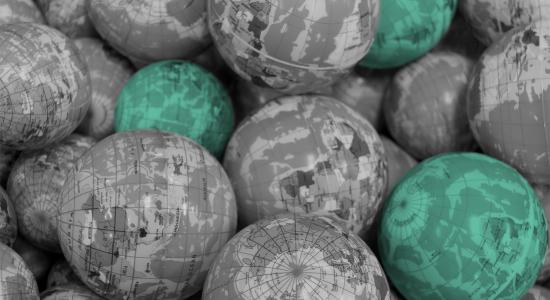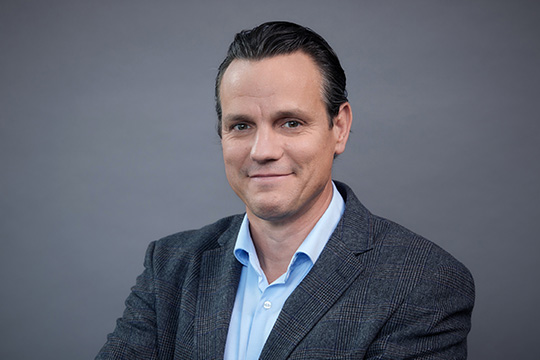“Digitainability,” the interplay between digitalization and ecological sustainability, is the focus of research conducted by Dr. Jakob Rhyner, Scientific Director and Professor of Global Change and Systemic Risks at the Department of Agriculture at the University of Bonn. During our conversation, we find out what factors make sustainable operation possible.
Professor Rhyner, you hold the Chair for Global Change and Systemic Risks at the Department of Agriculture at the University of Bonn. What systemic risks do you see in the current “system” of agriculture?
In simple terms, systemic risks are those risks that involve highly disparate areas and consequently demand consideration of many diversified circumstances. In agriculture, the greatest systemic risk is the conflict between the requirements of ecologically good management and the provision of food for eight billion people, a number that will rise to eleven billion by the end of the century. Although we have passed the point of fastest population growth and the rate has begun to decline, we will nevertheless have substantially more mouths to feed in the future. The positive aspect is that there is essentially enough food available for the eight billion people now living on the planet — probably the first time this has ever been the case in human history. People suffering from hunger anywhere in the world is truly a scandal; there is enough food for all, but it is not well distributed. This volume of production, although adequate to meet need, is achieved by the use of a production method that is in conflict with ecological principles, however.
Do you see any hope for sustainable agriculture?
The major issue for agriculture of the future is finding ways to alter favorably the relationship between the ecologically negative impact and the increased provision of food. But the answers to these questions will not be found solely in the meadows and fields. The food industry and biotechnology have a major role to play — meat substitutes are one example — as does (ultimately) consumer behavior. I see the solution in the cooperation within this triumvirate — agriculture of the greatest possible efficiency that simultaneously reduces the use of pesticides, the food industry, and consumer behavior — that must interact well to achieve the highest possible level of sustainability. I am hopeful that the worst is behind us; the question now is rather one of whether we will accomplish this feat before it is too late.
In your position as an active member of the “Bonn Alliance for Sustainability Research,” you promote interdisciplinary interaction. What areas of expertise are in particular demand in this respect?
In the start-up phase in 2017, we set our sights on three topics: first, digitalization; second, migration and mobility; and third, the bioeconomy. The relevance of these topics is in flux; while migration and mobility were certainly important at that time, the topic of digitalization dominated the discussion of sustainability in 2020, shortly before Covid-19 emerged. However, digitalization does not appear at all in the 2030 agenda, which defines 17 sustainability goals from 2015. This has prompted us to launch the Digitainability project, which is funded by the German Federal Ministry of Education and Research. Recent months have seen us broadening our thematic scope. As of the moment, for example, one employee is working on sustainable consumption and another on the question of energy in the context of digitalization; we are also engaged in talks with partners regarding health issues.
Many industries are currently confronted by raw material shortages. What is your view of this phenomenon, and what actions do you recommend to companies to secure a more stable and resilient position for themselves?
I am not a supply chain specialist, but am happy to try my hand at an answer. It is true that there have been some abrupt changes in supply chains in the last several months. Nor is it surprising that the situation has resulted in part from Covid-19. But Covid-19 has not been the sole factor. The ship accident in the Suez Canal at the same time was a coincidence. Everyone knew about this bottleneck, but the incident made it painfully obvious as a serious problem for global supply chains. The principle of “just-in-time” has been taken to the extreme — maintaining inventories is frowned upon today, everything has to be on the move, and anything the customer wants has to be available immediately. Such systems have very few provisions for buffers and are vulnerable to disruptions like these. Buffer points along supply chains have become a significant issue.
I was strongly impressed by the developments in one supply chain: the timber market in Germany. Over the last three years, timber stockpiles in Germany have grown immensely. Because of dry weather conditions and the bark beetle, large numbers of trees have had to be felled, but the wood was nevertheless usable. And yet there was a shortage of timber; prices and waiting times went through the roof. Why? The reasons are found outside Germany. China and the USA as well as other countries are devouring huge quantities of wood. Customers in the USA are willing to pay high prices to meet the demand that has been boosted by coronavirus aid programs. I consider the timber market to be a good example of how a relatively local, national market has little defense when exposed to global events. Orientation to international markets is simply inevitable — and they are often highly unpredictable.
Let’s look to the future. What will a sustainable and “secure” infrastructure that is critical on a global scale look like?
Let’s stay with our example of the timber market. We find here the concurrence of many different factors that could not possibly have been foreseen. Unpredictable events can be countered solely by diversification and by provision of certain buffers, precautions that make supply chains more robust. To some extent, this would require moving away from just-in-time and a return to maintaining larger inventories. Ultimately, it boils down to a cost-benefit analysis. You need an answer to the question of whether customers are willing to pay more to get their cars right now — or whether they can wait six months. This is risk management.
In the future, new technologies will also create new opportunities; I dare say that in many areas there will be a certain transition from goods supply chains to information supply chains. In many cases, solely information such as construction plans will be exchanged and then realized at the destination using 3-D printing. So I am not pessimistic about future supply chains.
Where are there what energy demands and material requirements in this “wish list” infrastructure?
The relationship between energy and material is very interesting. Over the course of time, the production of goods has become more and more efficient, requiring less energy and material per item and in the sense of added value. Cars today consume significantly less fuel than they did 40 years ago. But we also see the so-called rebound effects: we are producing more and the total energy consumption is higher. Both tendencies have been known for a long time.
The use of renewable energies is in this respect interesting as sun and wind do not produce in response to consumer needs — in other words, they are not always available when we need them, giving ever greater urgency to the need to develop suitable means of storage. One of the great storage media is hydrogen. Hydrogen production and its reconversion to electronic power consume energy. So I present the unpopular hypothesis that we will need even more energy in a future system based on solar and wind energy. This is not a disadvantage from my point of view because the primary concern is always that more energy means more CO2, but the two factors are no longer linked in this case.
A second important resource for wind and solar energy, however, is the land area that is needed, and this requirement is likely to be much larger than the oft-discussed 2 percent of the land area.
A third important factor for power generation based on sun and wind concerns the absolutely massive amounts of different minerals that must be mined for the solar panels and the magnets in the wind turbines, just to mention two examples. This is where efforts to achieve a closed-loop economy will become more important than ever. We must move away from using new materials for every device. Recycling materials (i.e., separating them for reuse) also consumes energy, however, which is why in a closed-loop economy we benefit from lower resource consumption, but may use more energy. The two elements are interrelated.
I have borrowed the term “digitainability” from my conversations with you. How do you view the interplay between digitalization and ecological sustainability?
I can give you two examples of this.
- There is a field of intensive agricultural research called precision agriculture. The University of Bonn, for example, operates the major research program “PhenoRob” in cooperation with partner institutions. Thanks to remote sensing, a field is no longer analyzed strictly as a single unit in terms of fertilization, application of pesticides, etc.; the use of sensors and drones allows every plant and every leaf to be viewed in a kind of detailed monitoring, significantly reducing the use of fertilizers, water, and pesticides in agriculture. We see here that digitalization has a direct and highly positive impact.
- But what about energy consumption? Many studies show that energy consumption continues to increase because of digitalization, e.g., from the energy gluttons blockchain, artificial intelligence, or streaming. There are various considerations in terms of streaming as it is accompanied in some cases by increased consumption — more and more Netflix generates more and more energy consumption, the rebound effect mentioned above. But new technologies such as these are also being used in the optimization of energy transmission systems to make energy use more efficient.
These are questions we discuss in our Digitainability project with the aim of finding out exactly where the impacts of digitalization are positive and where they are negative.
In your career, you have conducted truly hands-on research in various areas such avalanche protection in Switzerland. The risk assessment in this field has an immediate effect on what happens. What have you brought with you from that time to your current job?
Generally speaking, risk management tends to be useful in all areas, but you must be careful with a lot of the details. There are, however, certain basic attitudes that I have been able to adopt. These concepts are not new or surprising, but not always easy to apply. One example is to stay calm and take a close look instead of immediately making sweeping generalizations. When assessing the risk of avalanches, you must carefully determine whether (for example) you are talking about a small mountain village and the local inhabitants or a large ski resort where tourists know virtually nothing about the area and cannot assess the situation. These are two completely different contexts.
Moreover, as everyone knows, there is no such thing as absolute security. Now and then things go wrong; hindsight is always perfect. The analysis in the aftermath of harmful events can be carried out from widely varying perspectives. One is the question of who was at fault. For me as a scientist, however, the other question is more pertinent: How can we do better next time?
Both questions require a precise analysis, but completely different approaches. The question of fault can be clarified by legal experts with scientific support as necessary. The question of what can be done better concerns us scientists directly. The procedure for finding an answer calls for the evaluation of scientific findings and data. I continue to use this method from my days as an avalanche expert and follow it when dealing with unresolved issues.
Thank you for the interview!








